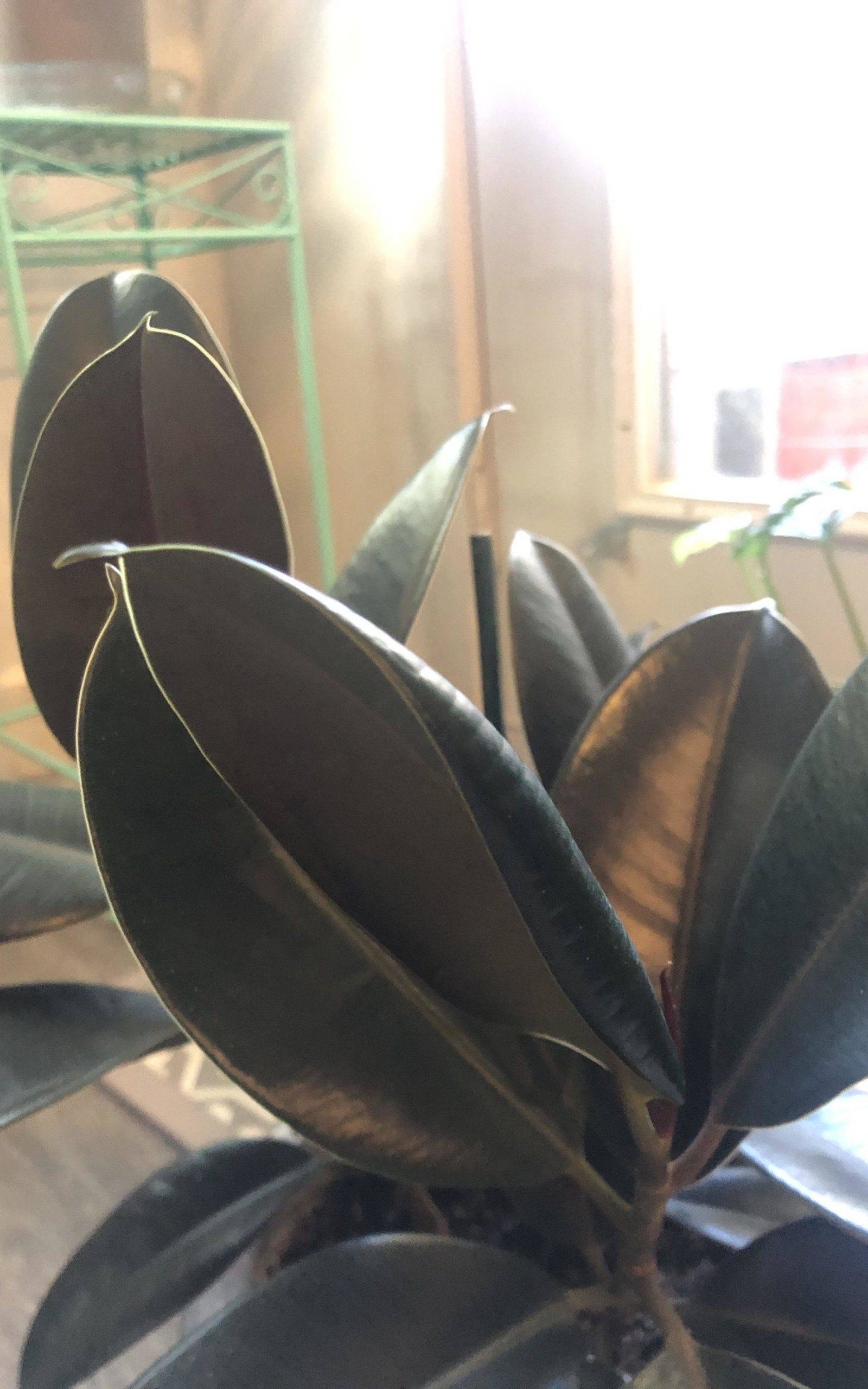Why do Rubber Tree Leaves curl? – A few possible reasons for Rubber Plant Leaves curling!
Why do Rubber Tree Leaves curl? Curling Ficus leaves is one of the most common rubber plant leaf problems. The Rubber Plant leaves start curling when they are prone to some plant illness, or they fall prey to some pests or insects, improper watering, or change in climate and temperatures. In this article, let us know a few possible reasons to answer the question “Why do Rubber Tree Leaves curl?”
Rubber Trees or Rubber plants are so popular due to their thick, shiny, and huge lacy leaves. Usually, the rubber plant leaves are straight and upright. The curling of mature rubber leaves is a sign of the initiation of the problem. New or tender leaves usually curl up while growing, but once they are mature enough they usually appear straight with lined edges. Thus when they get mature it causes ficus leaves to curl down it is time to notice or take some action.
There are several reasons or causes to answer the pertaining question, “Why do Rubber Tree Leaves curl?” Let’s know a few major reasons for the curling of rubber tree leaves.

Why do Rubber Tree Leaves curl?
1. Cold Temperatures
Rubber Plants prefer a tropical or warm climate. These plants can thrive in warm regions compared to cold regions, in winter we have to keep the plants warm to keep them growing. The Rubber plant also cannot handle too much cold or frost, and this is when the rubber leaves start drooping or look lifeless.
Though Rubber trees make good houseplants and are easy to maintain, they cannot thrive in extremely cold temperatures or shady spot that has frequent cold blow. Rubber plants do well in spots where the morning sunlight is accessible.
2. Improper Watering
These plants do not require daily watering. This plant only requires watering when the topsoil is completely dry. Typical water requirements would be once or twice a week during summers or unless the topsoil seems completely dry and during winters watering requirements would be once in three or four weeks or when the top layer seems dry.
Rubber plants when placed in darker rooms usually require less water. Room temperature water is proper for completing the watering needs of the rubber plant. These are the proper water requirements of a rubber tree or plant. But what happens when the plant is overwatered or underwater?

– When the rubber plant is overwatered!
Firstly, the rubber leaves start to curl just like the hydrangea leaves curl. Overwatering is the most common cause of plant death or affects plant growth. A heavily watered plant needs good drainage or else it can rot from waterlogging.
The roots of such waterlogged plants may die or rot as they are unable to absorb enough oxygen to function. Waterlogging cuts the air supply to roots which may result in a damaged plant that can eventually die. The rubber plant also displays a few more signs along with leaf curling like,
- Brown or darker stems than usual
- Rubber Tree Leaves falling off
- Soggy soil can be confirmed by touching it.
- Soil starts attracting pests and insects.
- Soft and squishy leaves and stems.
- Yellowing of leaves.
– A few solutions to recover overwatered plant
- First and foremost stop watering the plant for a while.
- Changing the location of the plant to a sunny and well-ventilated area.
- Prune the plant immediately after changing its location.
- Changing the pot and cleaning the roots.
- Re-Potting the damaged plant into well-drained soil.
- Only water after the topsoil completely dries out.
- Adding a layer of perlite can also be beneficial.
- Treating the plant with a fungicide or treating the plant with pest control.
– When the rubber plant is underwatered!
Underwatering is not providing enough or sufficient water that is required for plant growth. Underwatering can also be caused if the plant is exposed to harsh sunlight for a longer time and eventually dries out when also not watered. Luckily rubber plant survives underwatering up to some extent than overwatering.
– Signs of an underwatered plant:
- Curling of rubber plant leaves.
- Drooping leaves and stems which look lifeless.
- Huge cracks in the soil.
- Brownish and dry leaves that eventually curl up and fall.
– A quick solution to revive an underwatered plant:
If the rubber plant leaves are a little dry and just started to curl up, then the plant can be revived by watering it enough unless the topsoil is again wet and moist. The plant may take a longer time than usual to recover but can be sustained.
“Trees are the best monuments that a man can erect to his own memory. They speak his praises without flattery, and they are blessings to children yet unborn.”
– By Lord Orrery
3. When attacked by pests or plant diseases
When flocked by pests like aphids, thrips, gnats, spider mites, and a few more the rubber plant leaves tend to get damaged and curl up.
Plant diseases like White Root fungus, Upas fungus disease, Skin/Bark Necrosis Disease and a few more result in damaged and curled-up rubber plant leaves.
– Signs of infection –
- Sudden yellowing of leaves
- Small holes in the leaves like pothos leaves
- Sticky residue on the leaves
- Web-like structures on the leaves
Additional tips for planting and maintaining the rubber plant:
These points may become one of the solutions to the question, “Why do Rubber Tree Leaves curl?”.
- Make sure that the rubber plant is potted in a ceramic or clay pot, which provides a similar habitat for plants rather than plastic pots, which are indeed harmful after longer periods.
- Rubber plant requires very less water during winters, as it is dormant during that time. So watering once every 3-4 weeks might be sufficient, still, it also depends on the potting soil too. Thus determining the frequency of watering only after the top layer of soil is completely dry is beneficial.
- Pruning the plant after the blooming season might be helpful.
Will Rubber Tree Leaves Uncurl
Many people are curious about how rubber tree leaves will uncurl after being frozen. The answer is that it depends on the tree and the climate. In general, most rubber tree leaves will uncurl within a few weeks after they have thawed out. However, some trees may take longer to uncurl. If you are concerned about the Leaves of your rubber tree, you can check them periodically to see if they are uncurling.
FAQs
1. How do you keep rubber plant leaves from curling?
To prevent my rubber plant leaves to curl down, you can change the location of the plant from outdoors to indoors, or if it is already placed indoors then make sure to move it to a spot that is warm, humid, and receives bright indirect light this really helps to fix rubber plant.
2. How do you straighten a rubber plant?
1. Supporting the plant with thick stalks or tying it to a rod in the opposite direction of the bend for a while.
2. Moving it to a sunny spot outside if it is indoors.
3. Stop pruning the plant until it’s straight.
3. Do Rubber trees need direct sunlight?
Bright but indirect light will be more beneficial for Rubber trees.
4. Why do Rubber Tree Leaves curl?
The Rubber Plant leaves tend to curl when they are prone to some plant illness or diseases, or they fall prey to some pests or insects, improper watering, or change in climate and temperatures.


